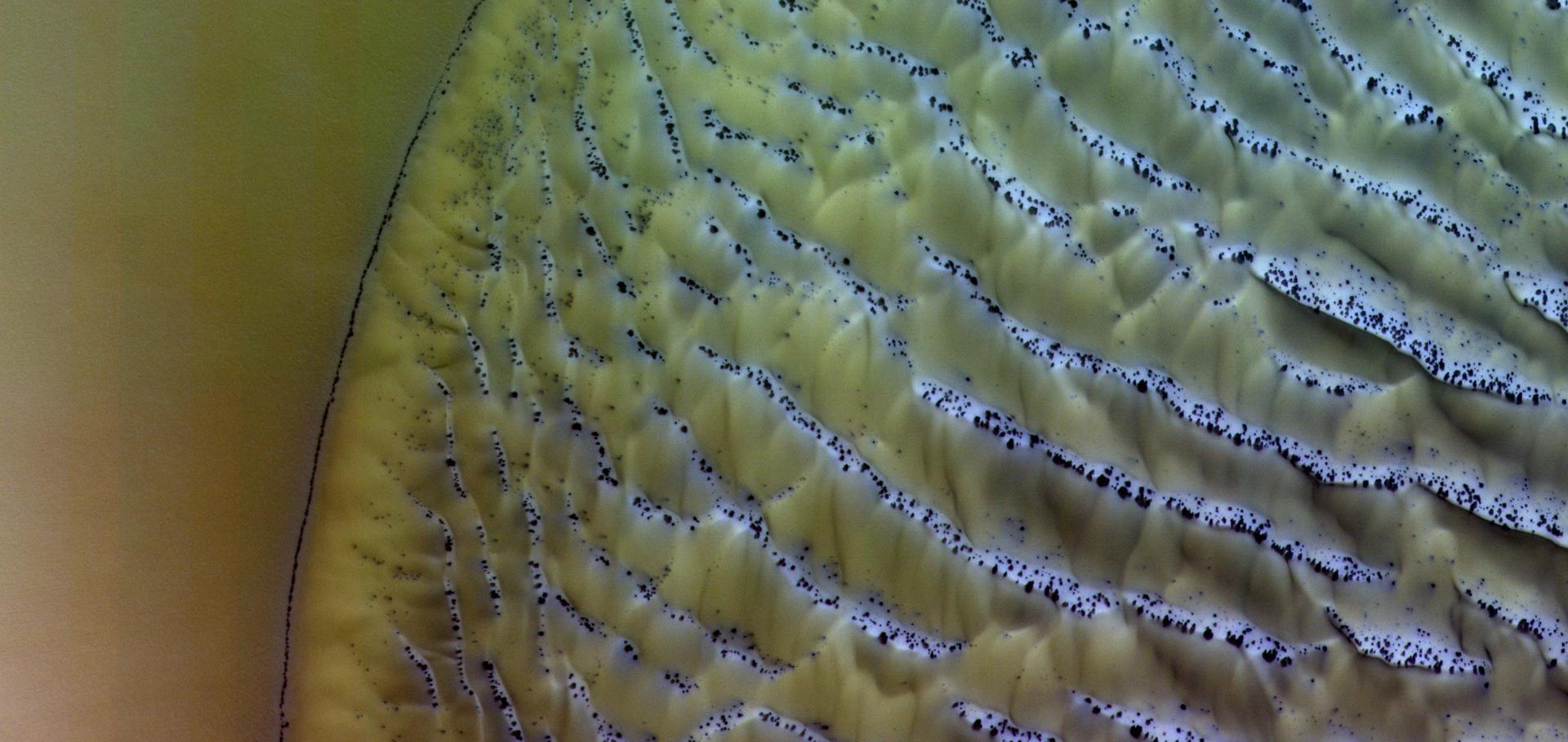Seasonal changes in the vertical structure of ozone in the Martian lower atmosphere and its relationship to water vapour.
University of Oxford (2022)
Abstract:
Ozone and water vapour volume mixing ratio vertical profiles in the Martian atmosphere derived from solar occultation mid-infrared spectra recorded by the Atmospheric Chemistry Suite on the ExoMars Trace Gas Orbiter. Data were recorded between mid Mars year 34 to early Mars year 36. Trace gas retrievals were done using the JPL Gas Fitting Software.Seasonal changes in the vertical structure of ozone in the Martian lower atmosphere and its relationship to water vapour - Temperature and GCM data used
University of Oxford (2022)
Abstract:
Temperature data derived from ACS NIR observations of Mars used in the paper: Seasonal changes in the vertical structure of ozone in the Martian lower atmosphere and its relationship to water vapour. LMD GCM data interpolated to the terminator (T/P/density/H2O/O3) used in the paper: Seasonal changes in the vertical structure of ozone in the Martian lower atmosphere and its relationship to water vapour.Isotopic composition of CO2 in the atmosphere of Mars: Fractionation by diffusive separation observed by the ExoMars Trace Gas Orbiter
Journal of Geophysical Research: Planets American Geophysical Union 126:12 (2021) e2021JE006992
Abstract:
Isotopic ratios in atmospheric CO2 are shaped by various processes throughout Mars' history, and can help understand what the atmosphere of early Mars was like to sustain liquid water on its surface. In this study, we monitor the O and C isotopic composition of CO2 between 70 and 130 km for more than half a Martian year using solar occultation observations by the Atmospheric Chemistry Suite onboard the ExoMars Trace Gas Orbiter. We find the vertical trends of the isotopic ratios to be consistent with the expectations from diffusive separation above the homopause, with average values below this altitude being consistent with Earth-like fractionation (δ13C = −3 ± 37‰; δ18O = −29 ± 38‰; and δ17O = −11 ± 41‰). Using these measurements, we estimate that at least 20%–40% of primordial C on Mars has escaped to space throughout history. The total amount of C lost from the atmosphere is likely to be well in excess of this lower limit, due to carbonate formation and further sink processes. In addition, we propose a photochemical transfer of light O from H2O to CO2 to explain the larger enrichment in the 18O/16O ratio in H2O than in CO2.A stringent upper limit of 20 pptv for methane on Mars and constraints on its dispersion outside Gale crater
Astronomy and Astrophysics EDP Sciences 650 (2021) A140
Abstract:
Context. Reports on the detection of methane in the Martian atmosphere have motivated numerous studies aiming to confirm or explain its presence on a planet where it might imply a biogenic or more likely a geophysical origin.Aims. Our intent is to complement and improve on the previously reported detection attempts by the Atmospheric Chemistry Suite (ACS) on board the ExoMars Trace Gas Orbiter (TGO). This latter study reported the results of a campaign that was a few months in length, and was significantly hindered by a dusty period that impaired detection performances.
Methods. We unveil 640 solar occultation measurements gathering 1.44 Martian years worth of data produced by the ACS.
Results. No methane was detected. Probing the clear northern summer season allowed us to reach 1σ upper limits of around 10 pptv (20 pptv at 2σ), with an annual mean of the smallest upper limits of 20 pptv. Upper limits are controlled by the amount of dust in the atmosphere, which impairs detection performance around the equator and during the southern spring and summer seasons. Observations performed near Gale crater yielded 1σ upper limits of up to four times less than the background values measured by the Curiosity rover during the corresponding seasons.
Conclusions. Reconciliation of the absence of methane in the TGO spectra with the positive detections by Curiosity is even more difficult in light of this annual survey performed by ACS. Stronger constraints are placed on the physical and chemical mechanism capable of explaining why the mean of the best overall upper limits of ACS is ten times below the smallest methane abundances measured by Curiosity.
Isotopes of chlorine from HCl in the Martian atmosphere
Astronomy and Astrophysics EDP Sciences 651 (2021) A32


